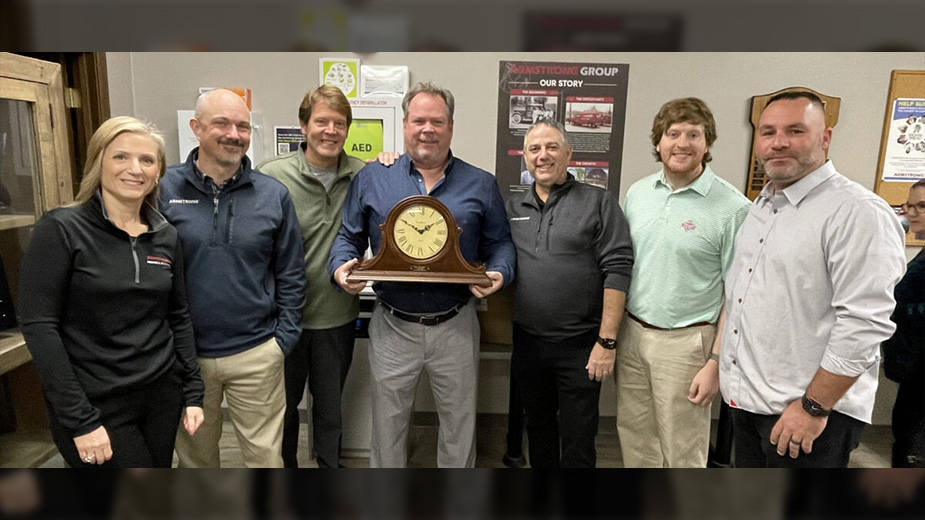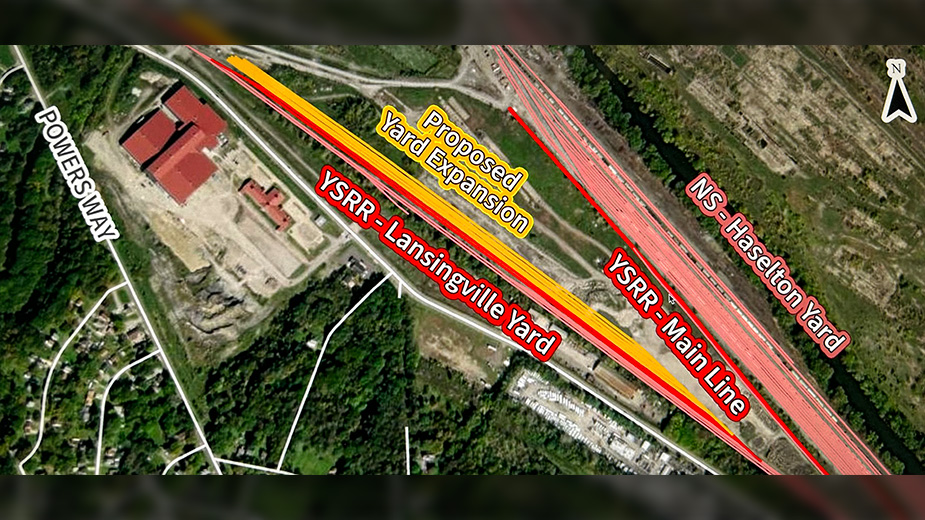Contract Talks Will Decide Plant’s Fate, UAW Says
YOUNGSTOWN, Ohio – The leadership of UAW Local 1112, which represents nearly 1,500 hourly workers at General Motors’ Lordstown complex, has vowed to do everything possible to secure a new product for the plant.
Any chance of this happening, union leaders say, depends on the outcome of national contract negotiations beginning next year, and the local contingent’s efforts to convince the automaker that Lordstown presents the most viable business case to manufacture a new vehicle.
“We have our faith in the International,” Rick Smith, financial secretary at UAW 1112, said Tuesday. “The corporation is doing what they want to do, and that’s whipsaw one local against another to see who’s going to give up the most. That’s got to stop.”
On Monday, GM announced it would discontinue production March 1 of the Chevrolet Cruze, the small sedan manufactured at Lordstown. The company also announced it would shut down operations at production plants in Detroit and Oshawa, Canada. Two other propulsion plants in Baltimore and Warren, Mich., are also slated to close.
None of the plants are allocated a new product for 2019, GM said, and the cutbacks would save the automaker $6 billion annually.
GM said it was ceasing production of the Chevrolet Cruze, Impala, and Volt to instead concentrate on investing in trucks, sport-utility vehicles, crossovers, and accelerate technological development of autonomous vehicles.
“I’m not opposed to that. I think it’s good and I’m glad they’re looking ahead and not playing catch-up,” Smith said. “But, you need a better game plan than what you’re putting together instead of pitting [union] local against local.”
Since the Lordstown plant will be shuttered beginning in March, the International will take the lead in negotiations. Yet there are limitations as to how much impact the union can have on GM’s decision-making, states the contract the UAW signed with the company in 2015.
“There’s a paragraph in the national agreement that gives GM the right to run the business as they see fit,” Smith said.
According to paragraph eight in the collective bargaining agreement, “The products to be manufactured, the location of the plants, the schedules of production, the methods, processes and means of manufacturing are solely and exclusively the responsibility of the corporation.”
Still, the union does have a voice and needs to stand strong in this difficult time, said Tim O’Hara, vice president of UAW 1112. If this is GM’s way of playing tough, then it’s the worst he’s seen in his 19 years at Lordstown, O’Hara said.
“The worst that’s happened before is that the company would idle the plant for a month to keep it at a 60-day inventory,” he said. Currently, there is about a 44-to-48-day inventory of the Cruze, which made the announcement to discontinue production more surprising. The Cruze was initially scheduled for production through the 2021 model year, he said.
Moreover, since the last collective bargaining agreement was signed in 2015, O’Hara said that GM has earned nearly $40 billion in profits. “That’s a lot of money, and it shows the corporate greed that’s out there. How much is enough? When is enough, enough?”
In early 2017, GM initiated its first slate of layoffs at the Lordstown plant when it announced the elimination of the third shift. Attrition packages helped ease some of the pain, but about 800 or so workers lost their jobs. A second round of layoffs was announced this summer, when the second shift at the plant was eliminated, leaving about 1,500 hourly workers at the plant.
“I was making about $19.80 an hour plus overtime,” said Rochelle Carlisle, who lost her job when the third shift ended. She worked at the plant for two years, and enjoyed the good wages and the health care benefits she could provide for her two daughters.
“Since then, I’ve been working as a server for $4.30 an hour plus tips,” she said. “It’s difficult to find full-time work since no one wants to pay out benefits. It’s been hard.”
Yet the despair that resonated throughout the region in the wake of GM’s announcement Monday didn’t dampen Wall Street’s initial optimism about the GM’s future as a whole. GM shares climbed $2 Monday to $38.54 on the heels of the announcement, but fell to $36.69 at the close of trading today.
GM’s stock drop on Tuesday, analysts suspect, may be because of the harsh rhetoric from President Donald Trump, who has threatened to cut GM subsidies in the wake of the company’s announcement Monday. These subsidies would also include support for electric cars, the president said Tuesday in a tweet.
Still, it’s unclear as to whether the president’s threat will have the intended effect of bringing work back to the plants targeted for shutdown, and it’s likely that GM will continue with its long-term plans.
“With everything that is happening, there were a lot of signals that the company had to move sooner,” observed Ivan Drury, senior manager of industry analysis at Edmunds. “A lot has come from Tesla and others who are bending to the market quicker.”
GM has opted to plan ahead and get on the attack as soon as possible, Drury said. “For investors, GM is making the right move because they have to do this. It wasn’t a matter of if, but when.”
That’s little consolation to those who are staring at the loss of their livelihoods, Drury noted, and the aftershocks of closing the Lordstown plant will be significant – affecting retail, housing, service establishments and suppliers.
Given the amount of investment it would take to retool the plant, Drury finds it’s unlikely that the Lordstown complex would be awarded another vehicle anytime soon. “I wouldn’t be hopeful that they would open the doors.”
GM has reversed its course in the past. In 2009, GM shut its plant in Spring Hill, Tenn. only to retool and restart it several years later. That plant today employs about 3,000 workers.
There’s also the possibility of another auto manufacturer stepping in to purchase the plant and restart operations should the effort to secure a new product fall short.
That’s not an option that David Green, president of UAW Local 1112, wants to consider at the moment. “My hope is that we get allocated a product,” he said. “I think GM is looking for competition and they want to see where they can put a new vehicle.”
Lordstown makes sense logistically, Green said, since the plant is positioned near a major highway and 80% of the complex’s product is sold within a 600-mile radius. Plus, Local 1112 members agreed to merge with UAW Local 1714 and create a single bargaining unit, while also agreeing to more outsourced work.
“None of these decisions are popular with our members,” he said. “But we have to make tough decisions.
Green noted that the region has been hit with plant closings many times before, most recently the closures of Northside Medical Center in Youngstown and the Kmart distribution center in Warren.
That makes it even more difficult for former GM workers like Carlisle, as she continues to search for a secure, sustainable career in the Mahoning Valley. “There’s nothing here that could compare to GM,” she said. “Nothing nearly as substantial.”
Pictured: Rochelle Carlisle, former General Motors Lordstown worker.
COMPREHENSIVE COVERAGE:
GM to Close Lordstown Plant In March
Inside Union Hall, GM Announcement ‘A shot in the Gut’
Amid GM Fallout, Leaders Focus on Next Steps
Workers Face Uncertainty After GM Decision
Chevy Dealers Not Surprised by Cruze Cancellation
Brown Calls GM Decision ‘Corporate Greed’
Ryan on Plant Closing: ‘New Black Monday’
Read Full Text of GM Closings Announcement
Ryan Wants Congressional Hearing on GM Tax Windfall
Contract Talks Will Decide Plants Fate, UAW Says
WATCH VIDEO:
Leaders React to Lordstown Closing
‘3 Minutes With’ Greg Greenwood, Chevrolet dealer
‘3 Minutes With’ Dave Green, UAW Local 1112 president
Copyright 2024 The Business Journal, Youngstown, Ohio.



